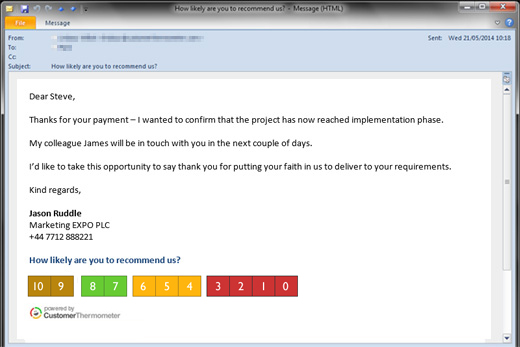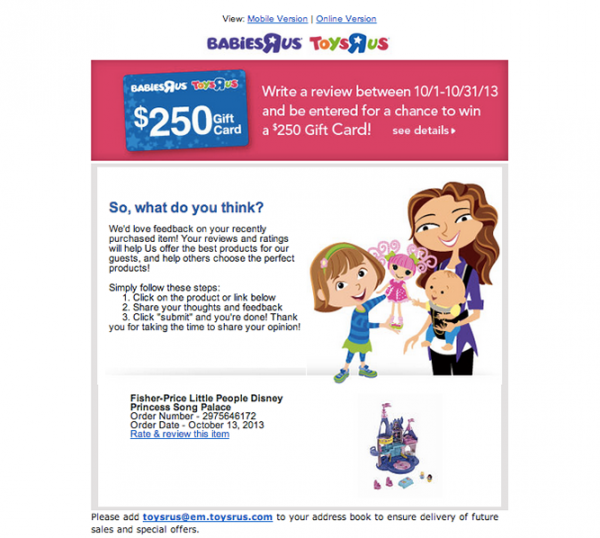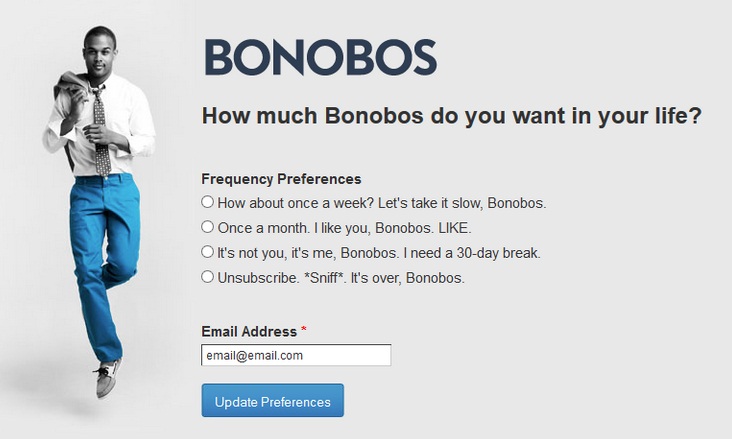6 Keys for Winning Email Surveys
Email surveys are one of the easiest and most economical ways of getting the pulse of your customer. Especially for smaller firms that don’t have deep budgets, the email survey is an important feedback tool.
However, email surveys only work if done right. If the email has a weak subject line or the survey is too long, for instance, the campaign will fail.
Here are six keys you should consider for email surveys.
1. Embedding Surveys
Instead of sending out survey links in the email, just embed the survey itself. You can embed surveys using various tools such as Google Forms, but also include a link in case the customer’s email client balks at the embedded form.
By embedding the survey directly in the email, you eliminate one extra step, reduce drop-out and get a faster response.

2. Adding Incentives
Offer incentives in your surveys whenever possible. The customer’s time is valuable, so they need a reason to spend this time on the survey.
If you are asking your customers to write a review, for instance, offer them a 10 percent discount on your product or service. Some companies, such as Vimeo, even go so far as to give away $50 Amazon gift cards for participation (they make the surveys long, though, since they know their incentive is a good one).
Various incentives you might try include free samples, discounts, buy-one-get-one-free offers, bonus points, store credit, gift cards and special drawings.

Source: Vertical Response
3. Clearly Stating a Call to Action
Always keep in mind that your customers are working people. Sending out surveys with lengthy content won’t cut it. Be precise and to the point, and make sure that they understand the call to action at the beginning of the email.
Clear CTAs help ensure that the customer doesn’t opt-out in the middle, provides clarity to the customers, and tempt more customers to take the survey, among other benefits.
4. Having Meaningful Purpose
Never send out surveys that lack a strong central purpose. This is advice for not wasting your time on surveys that yield little. Everyone, customer included, should immediately know the purpose of the survey. Additionally, clear purpose makes the survey feel relevant and meaningful for the customers who receive it.
Source: Modgirl Marketing
5. Catching the Eye with Your Subject Line
The open rate of your survey depends on the subject line. If you are using boring subject lines such as “Take this survey NOW!” or “Please Give Us Your Feedback,” your open rate won’t be good.
You also must avoid spam filters with your email surveys, so avoid words like “now,” “free,” “amazing,” and “click here.”
Good subject lines are clear and inviting. Examples:
- Peter, tell us more about your purchase
- How can we improve our services?
- Review us and enjoy 20% off your next purchase
- Try our new product & tell us what you think!
6. Keeping it Brief
This cannot be overstated: Keep your survey brief. Long surveys don’t work.
Ideally you’ll keep your survey to less than 10 questions, and the questions will be short and easy to answer. Bonus points if you can figure out how to get meaningful feedback from one quick question or less than four questions.
Experts have shown that short surveys decrease bounce rates and catch customer attention more easily. They also, we must add, make survey aggregation easier when fill-in-the-blank answers are used.
Speaking of brief, let us know if this article was useful by answering the following two questions:
[poll id=”2″]
[poll id=”3″]


1 Comment
umraici
about 9 years agoThank you for the information, to participate in the survey such as this can increase revenue, and provider survey respondents also get targeted.
Reply